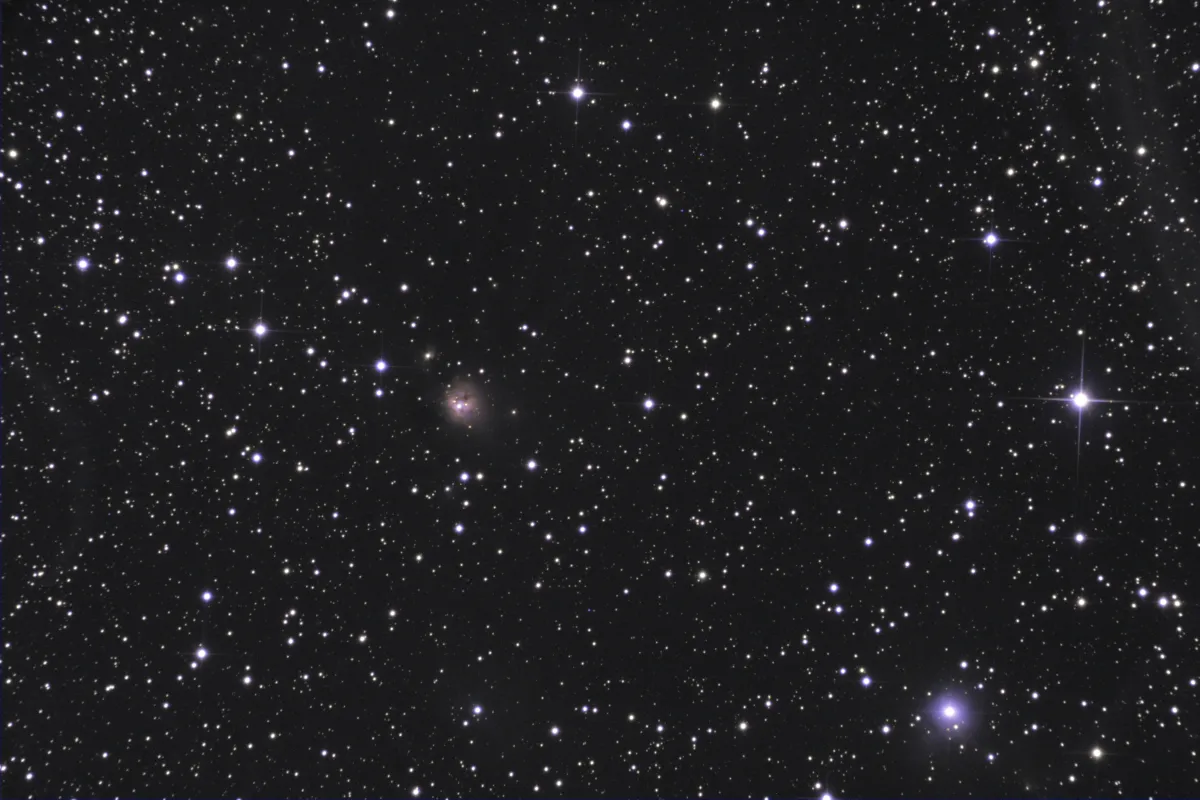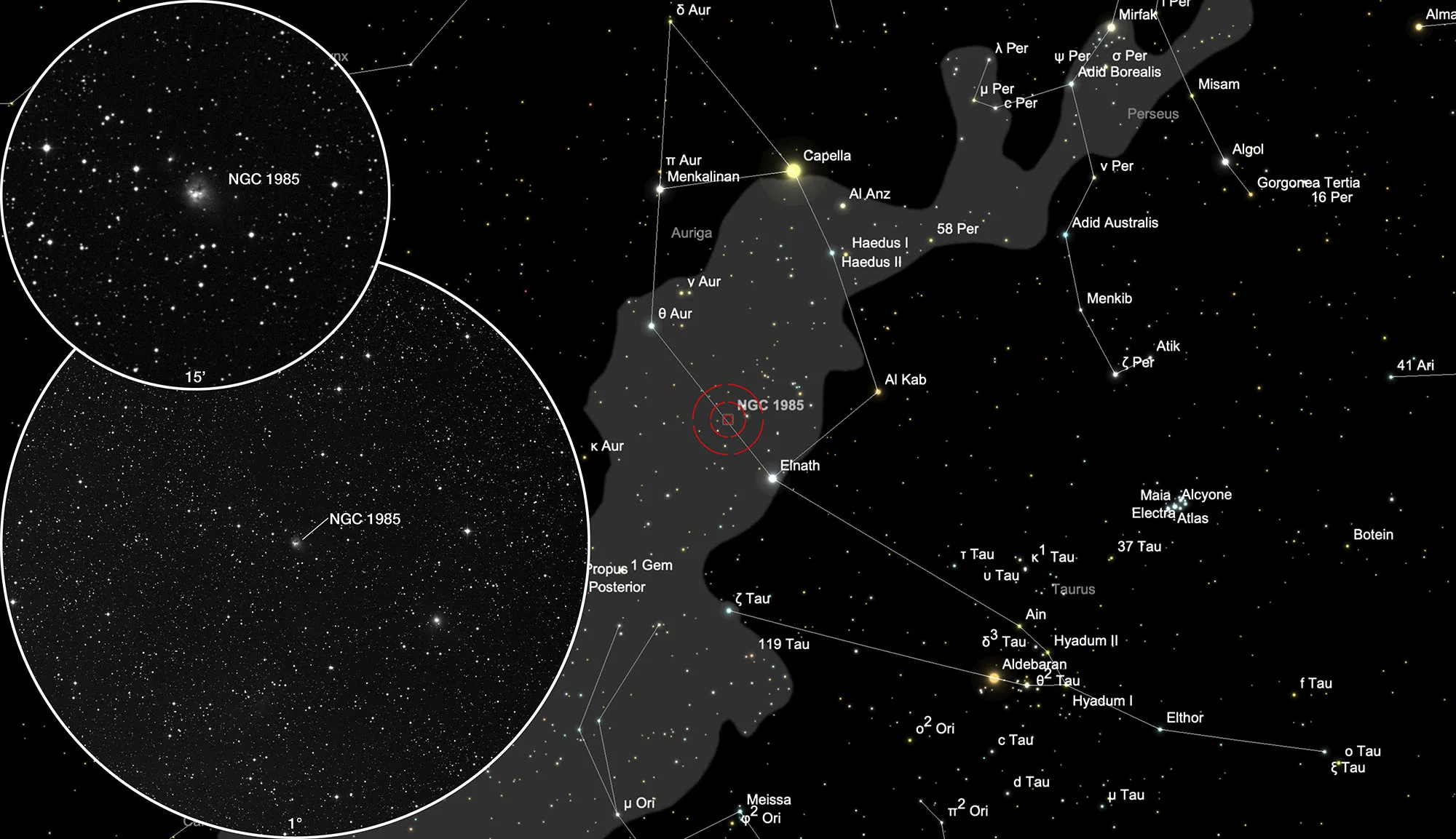Galactic Nebula NGC 1985

History
The NGC 1985 nebula was discovered on 13 November 1790 by the German-British astronomer William Herschel. [196] John L. E. Dreyer described it in his 1888 «New General Catalogue of Nebulae and Clusters of Stars» as follows: «considerably faint, small, round, rather suddenly brighter centre.» [313] In the «Catalogue of Galactic Planetary Nebulae» published in 1967, the two Czech astronomers Luboš Perek and Luboš Kohoutek still considered NGC 1985 to be a planetary nebula and gave it the designation PK 176+0.1. This error has been corrected in the 2001 new edition. [146]
Physical Properties

Also known as AFGL 5157 (Air Force Geophysical Laboratory) or Mol 11, the object hosts a molecular cloud-riddled, active star-forming region with H2O masers, H2 nodes, massive protostar candidates, and an H-II region. The area is approximately 13.5 pc in diameter at a distance of approximately 1.8 kpc. Embedded star cluster IRAS 05345+3157 is mainly visible in infrared light. An expanding shell of hydrogen, also glowing in the infrared, surrounds the cluster, which is estimated to be around 10 million years old. Research suggests that an early collision of two molecular cloud filaments may have triggered star formation. [367]
| Designation | NGC 1985 |
| Type | RN |
| Right Ascension (J2000.0) | 05h 37m 47.8s |
| Declination (J2000.0) | +31° 59' 20" |
| Diameter | 0.68 arcmin |
| Photographic (blue) magnitude | 12.7 mag |
| Metric Distance | 1.800 kpc |
| Dreyer Description | cF, S, R, psbM |
| Identification, Remarks | WH III 865; h 359; GC 1188; PK 176+0.1; CS=13.6, not a PN |
Finder Chart
The galactic nebula NGC 1985 is located in the constellation Auriga, which is best visible from August to May.
